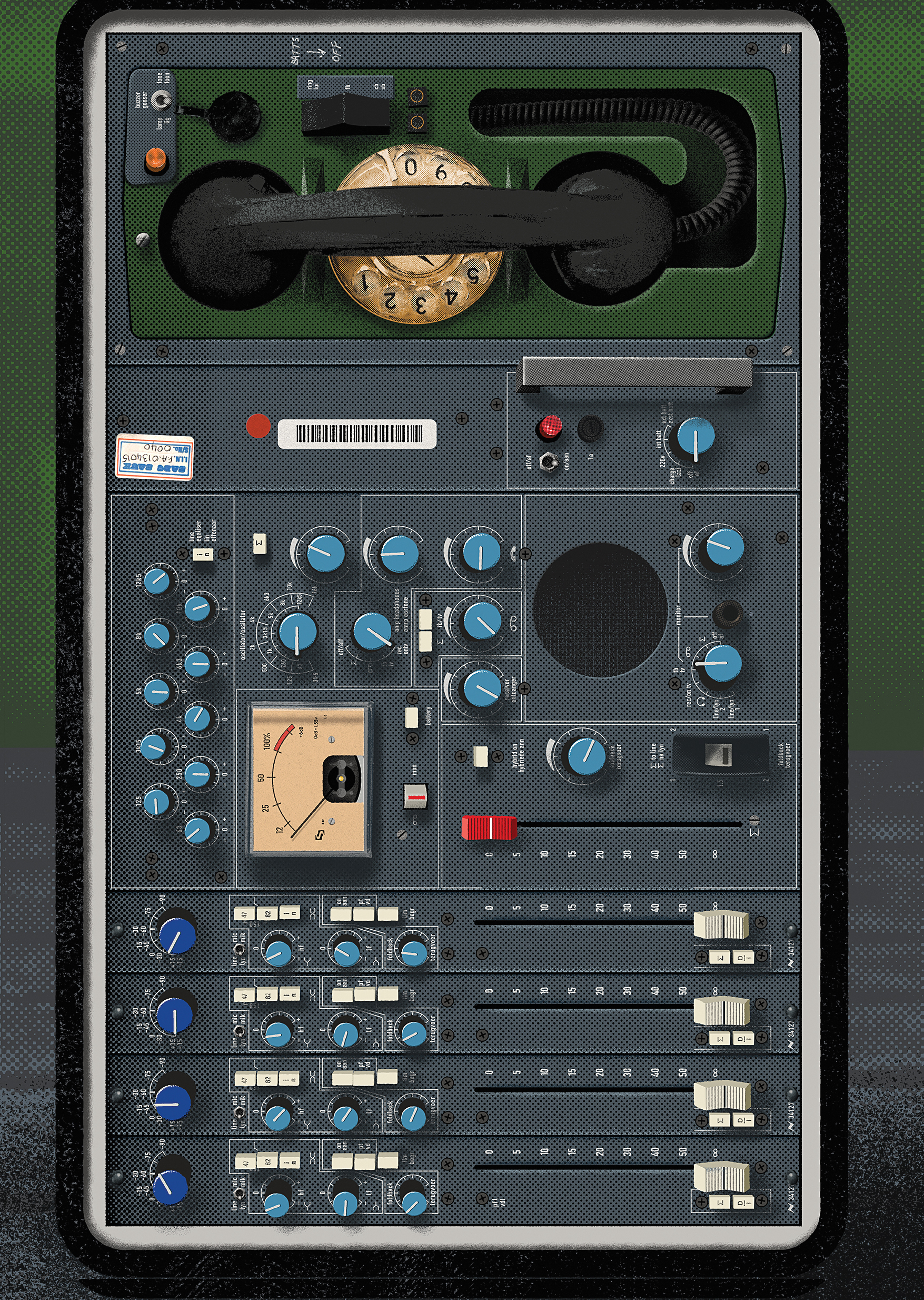The boxy, rectangular shapes, light grayish-white painted bodies, and contrasting black windscreens of the new dynamic microphones in Universal Audio Standard Series – SD-3, SD-5, and SD-7 with Hemisphere mic modeling – certainly don’t look like the classic studio mics they are intended to emulate. They more closely resemble a Bluetooth speaker or something you’d shout “Hey, Alexa!” at, but the solid metal construction feels well-built. Setting them apart even further, these mics come with software. If this is as far as your attention span can hold, I’ll spill it now – these mics sound good!
The SD-series mics must be registered to download UA's Hemisphere plug-in. UA Connect is required for the registration process, and authorization is as simple as clicking “add” and entering a serial number. The serial number on the box, however, had four extra prefix characters, which did not match the number on the tiny sticker inside the XLR jack. Once I got my flashlight and glasses out, I could register the first mic, and then “decode” the other two using only the label on the box (but it would greatly simplify the process if they matched). Next, I was able to activate, download, and install the native UADx plug-ins (which, for me, was AAX on Windows 10). If you have an Apollo unit, you can install the UAD-2 plug-ins, but you will need UAD software v11.3 or greater and to re-authorize your UAD-2 hardware.
I first tried the smaller SD-3 on a snare drum and rack tom. The raw sound was totally usable on its own, and with the plug-in set to a DN-57 model, it sounded very similar to the Shure SM57 I had next to it for comparison. The SD-3’s cardioid polar pattern seemed tight and was not picking up a lot of bleed from the rest of the kit. The Proximity control in the Hemisphere plug-in can pull a little more low oomph out of a drum or reduce it – just like if you were physically moving the mic closer or further away from the source (this can also help inform you how to actually move the mics). The plug-in's Filter adjustment might help reduce some low end bleed from the kick drum, or more drastically thin out the sound if that is the goal. But pay close attention, as the setting is not always a high-pass filter (depending on the mic model selected. For the DN-4 model, the Filter seemed to add some midrange crunch, while for other models, it might simulate a switch setting on the mic or an EQ preset. UA plans to update the documentation to clarify this). The Axis setting provides the ability to simulate the sound of changing the mic's angle in relation to the source. Changing the mic model also alters the sound, and while some of the changes are subtle, others are more obvious. The ability to change all of these parameters and the overall tone after recording is really nice! Be sure to listen to the differences in the context of a mix, too (not just solo'ed).
I tried the SD-3 and the larger SD-7 on guitar amps, and both worked well. The SD-7 without the Hemisphere plug-in captured a slightly wider frequency range than the SD-3 and has different mic models available. If you fear “getting lost in plug-in-land,” rest assured it really doesn’t take long to get familiar with the three main controls. Or, if you prefer presets, there are several to get you started, but it’s so easy to just swap mic models and spin the dials in the plug-in to hear what happens (a double click gets them back to default). At times, the Axis setting can be subtle, but when I tried cranking it with the RB-160 model when using the SD-7, I found that it drastically reduced the attack on a guitar track, resulting in a really cool, heavily compressed-like tone (so feel free to experiment!). The plug-in won’t prevent you from choosing the wrong physical source mic either, which can result in a whole new set of tones (even for the same mic model, i.e., DN-57). While that is not the intended use, whether they sound better or worse is up to you!
If your studio budget doesn't allow for days to position drum mics, then the medium-sized SD-5 is your new best friend! I tried the SD-5 on kick drum; the Filters, Proximity, and Axis settings made it super easy to dial in a killer sound. I was kind of shocked to get all the boom and snap I wanted, even though I only spent five seconds plopping the mic partway into the port on the kick drum's front head. When placed about two to three inches from the outside head and setting the plug-in to the DN-SUB model, I got another familiar sound within seconds. I am very used to the sound of my DIY subkick mic (a speaker wired as a mic). With a little EQ, I quickly had my real subkick and the SD-5 modeled subkick in the same ballpark. I also used the SD-5 to mic a bass guitar amp for a (loud) local punk band; the DN-12A mic model sounded excellent.
If you don’t have the room or budget for a huge mic locker and want to get a feel for some of these classic and sometimes difficult to obtain mics, the UA Hemisphere mic collection is a great introduction. The convenience provided by the plug-in to change the sound post-recording is huge – especially if you are the sole recordist at your home or small studio. Of course, these mics are not just for drums or guitars. You can use them anywhere you would use a dynamic mic and still benefit from the tone shaping available in the Hemisphere plug-in. They are already priced reasonably, but getting multiple mics for the price of one – who doesn’t like that?




_disp_horizontal_bw.jpg)